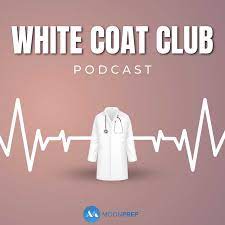|

Belmont University’s new Thomas F. Frist, Jr. College of Medicine, which opens its doors to students with a white coat ceremony on August 2, represents a significant addition to the institution’s historic campus. The building includes simulation rooms, virtual reality setups, and a unique lecture hall with integrated group workspaces and microphones, facilitating interactive and adaptive learning experiences for students. The establishment of this new medical school addresses the increasing need for more healthcare professionals amid a growing physician shortage. Belmont’s new facility, which cost approximately $180 million, aims to contribute to this effort by training future physicians and other healthcare professionals. The building, named after HCA Healthcare co-founder Thomas F. Frist, Jr., also includes space for nursing, pharmacy, occupational therapy, and social work programs.
Nineteen high-achieving high school juniors and seniors participated in UMass Chan Medical School’s 2024 High School Health Careers Program this summer. This four-week, tuition-free program is designed for students from economically and educationally disadvantaged backgrounds, offering early exposure to healthcare careers and inspiring future paths in medicine and science. The program includes intensive SAT preparation, health disparities research projects, and daily interactions with guest speakers from various healthcare fields, aiming to develop both academic and social skills important for medical careers. Applications for the 2025 summer program open in the fall.
Hawaii faces a significant shortage of approximately 700 doctors, a gap healthcare officials recognize as a long-term challenge requiring collaboration among the University of Hawaii’s John A. Burns School of Medicine (JABSOM), lawmakers, and future healthcare professionals. Recently, the school welcomed 77 new students, representing a potential solution to the state’s healthcare needs. JABSOM, ranked among the top 15 medical schools in the nation for primary care, is working to retain local talent by increasing its appeal to Hawaii students, with Dean Sam Shomaker noting that in-state medical graduates who complete their residency locally are highly likely to remain in the state’s workforce. Support from state initiatives like the HELP program, which offers loan repayment for doctors working in Hawaii, and efforts to retain local medical students are crucial strategies. Those in the program are motivated by the opportunity to serve their home state, underscoring the importance of local training and retention in closing the healthcare gap.
The University of California San Diego School of Medicine has achieved a Tier 1 rating in the 2024 U.S. News & World Report rankings of Best Medical Schools: Research, placing it among the top 16% of medical schools recognized for their research excellence. This accolade reflects UC San Diego’s strengths in medical innovation, high-quality education, and community service. Additionally, the medical school has introduced a new curriculum focused on health promotion and compassion, admitted a diverse class of students, and launched a new Physician Assistant Education Program. UC San Diego Health also earned top rankings in the Best Hospitals survey, further highlighting the institution’s commitment to healthcare excellence and innovation.
In the latest U.S. News & World Report rankings, the University of Nebraska Medical Center (UNMC) has achieved a Tier 1 designation for primary care training, placing it among the top 15 institutions in this category. This new tiered ranking system replaces the previous numerical rankings, grouping schools into four tiers based on their overall scores. UNMC is recognized for its excellence in preparing students for primary care roles and also earned a Tier 2 ranking for research. The new tiered system aims to better reflect schools’ overall academic quality and impact.

Don’t miss our most recent podcasts episodes! Listen on Apple, Spotify or Amazon today!
|



